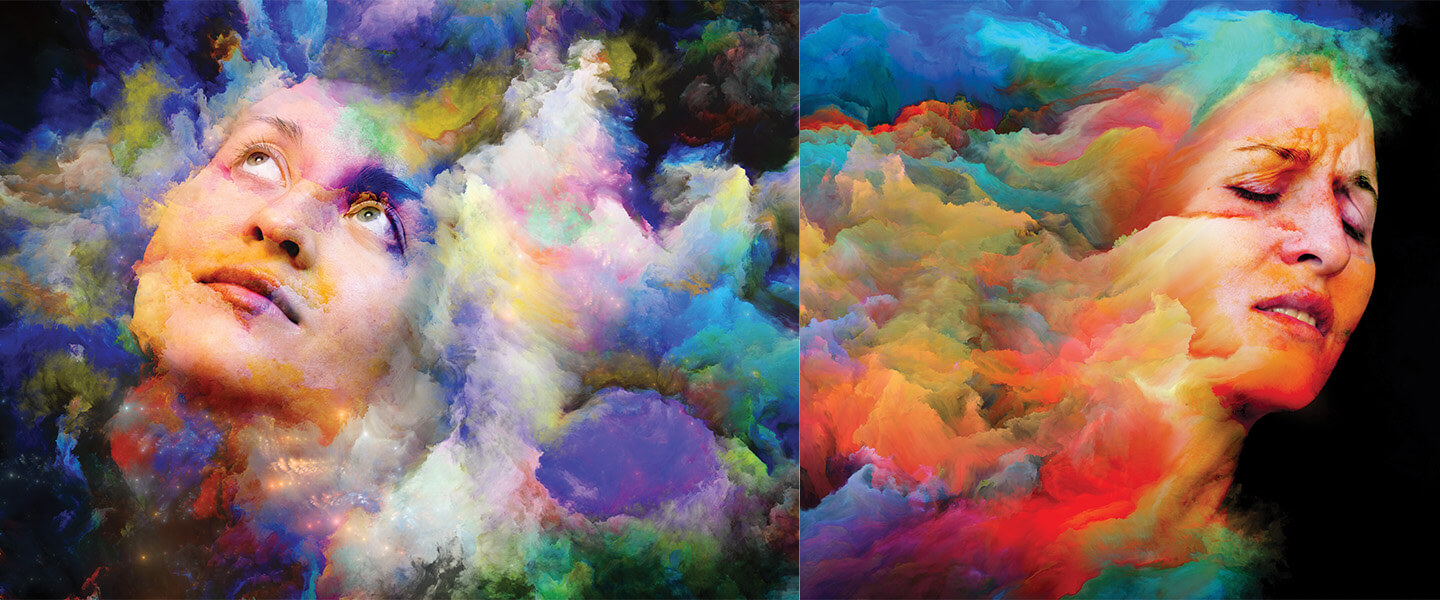This week Professor Vesna talked about the field of neuroscience intersecting with art. One of the topics she brought up in the third lecture video was the topic of what it really means to be conscious (Vesna). This touched upon the topic of experimenting with psychedelic drugs, not for a recreational way, but as a form of treatment. Now this was very surprising to me, as I’ve always been told to stray away from drugs. I have been on hard opioid drugs before, during my treatment because my pain was so severe, but never have I used outside of the hospital. Coming from this background, I understand that addiction is a real problem and that using drugs is very serious–even if they are medically prescribed. These medications can actually change the wiring of your brain (Kosten and George), which can cause extremely serious problems. With this being said, let’s take a look at some ways psychedelic drugs can be used to help people.

“Psychedelic-Assisted Psychotherapy: What We Know, and Still Don’t Know.” Brain & Behavior Magazine, September 2021 Issue, The Brain & Behavior Research Foundation, 15 Sept. 2021, https://www.bbrfoundation.org/blog/psychedelic-assisted-psychotherapy-what-we-know-and-still-don%E2%80%99t-know.
Psychedelics can be used to stimulate life changing experiences (Smith). In fact, many people report their experiences while tripping as being times of deep introspection. Even for the average person who is dealing with figuring out their own identity, this can be helpful for pointing them in the direction of a sense of purpose.
Bretz, Liz. ‘Shrooms! Shamans! Kosher LSD! Why Los Angeles Is Suddenly Tripping Out. Los Angeles Magazine, https://www.lamag.com/citythinkblog/shrooms-shamans-kosher-lsd-why-los-angeles-is-suddenly-tripping-out/.
There is a lot of research being done about using psychedelics to treat mental illnesses. Although this is a new and controversial field, there are studies that show drugs like ketamine can be used to treat schizophrenia, anxiety, and depression (Eschner). Ketamine can help by creating the chemicals responsible for euphoria, but it differs from typical psychedelics like LSD because it affects the prefrontal cortex, which is a part of the brain responsible for memory and learning (Hill). This does raise concerns about the risks of using ketamine, as the side effects may affect an individual’s decision making skills.
Maher, Courtney. Prefrontal Cortex Damage: Understanding the Adverse Effects & Methods for Recovery. Flint Rehabilitation Devices, LLC., https://www.flintrehab.com/prefrontal-cortex-damage/.
I’ve been high before (relax FBI it was legal, in the hospital), and sure it made me happy and numb, but it is not as great as it seems. It was scary to me the first time I was high because you lose control of your mind. For me, this is not a good feeling. After a couple more doses and throughout treatment, I did learn how to stay more in control. Whether it was the forced euphoria or relief from the pain, I used my newfound enthusiasm to blast music and dance with my doctors and nurses in my hospital room. These were good times that were a nice break from times of extreme stress, but don’t get me wrong–I do not want to ever be high again, or be in a position where I need these drugs to get through the hour.
Brangers, Carolyn. Winking Animals. Pinterest, https://www.pinterest.com/randomGURL/winking-animals/.
Works Cited
Eschner, Kat. “The Promises and Perils of Psychedelic Health Care.” The New York Times, The New York Times, 5 Jan. 2022, https://www.nytimes.com/2022/01/05/well/psychedelic-drugs-mental-health-therapy.html.
Hill, Richard. “Prefrontal Cortex.” The Science of Psychotherapy, Dahlitz Media Pty, 4 Apr. 2021, https://www.thescienceofpsychotherapy.com/prefrontal-cortex/#:~:text=The%20prefrontal%20cortex%20(PFC)%20is,making%2C%20and%20moderating%20social%20behaviour.
Kosten, Thomas R, and Tony P George. “The Neurobiology of Opioid Dependence: Implications for Treatment.” Science & Practice Perspectives, National Institute on Drug Abuse, 1 July 2002, https://www.ncbi.nlm.nih.gov/pmc/articles/PMC2851054/.
Smith, Serena. “The Life-Changing Realisations That People Had on Psychedelics.” VICE, VICE MEDIA GROUP, 4 Jan. 2022, https://www.vice.com/en/article/5dg9a5/the-life-changing-realisations-that-people-had-on-psychedelics.
Vesna, Victoria, director. Neuroscience pt3. YouTube, UC Online, 16 May 2012, https://www.youtube.com/watch?v=E5EX75xoBJ0&t=1s.




I really enjoyed this post. I enjoyed especially how you talked about being high, I have also been very high before (no I am not an FBI agent). Depending on the drug it can act in different ways which can cause different feelings. I think this is very good information to have because a lot of people do drugs without knowing what it does to your brain. Funny.
ReplyDeleteHi Vivek, great work on this week's blog post I think you did a terrific job. I think your transparency and use of your own prior knowledge was very insightful and helpful to fully drive home your argument for this post. I was really drawn to your use of science and personal experience in this topic. Great work!
ReplyDeleteI appreciate your perspective in this area as someone who has undergone the influence of strong drugs, and parts of your story appear humorous. I am wondering if you could elaborate more on the affects of psychedelics, and ketamine in particular, on the prefrontal cortex. This is a sizeable portion of the brain that is reponsible for a variety of functions (including memory and learning) so I would suppose that all psychedelics have effects on this region. Is there any subregion of the PFC that is affected, or any particular modification that distinguishes the effects of ketamine from other substances? A more fundamental question might be, How do we categorize psychedelics based on their chemical compounds or reactions in the brain?
ReplyDelete